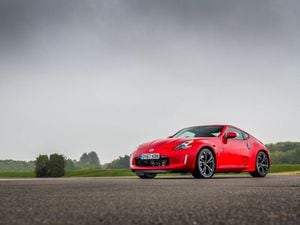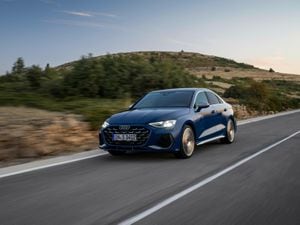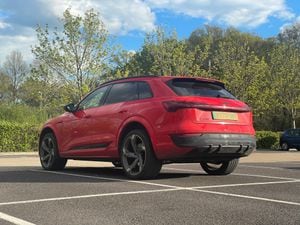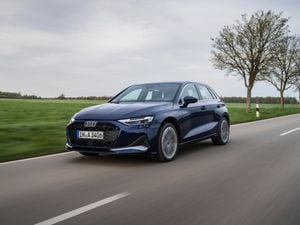UK Drive: Nissan’s 370Z is an old-school bruiser
The Nissan 370Z is an old-school coupe, but can it hack it against more up-to-date rivals? Jack Evans finds out

What is it?
In the world of SUVs, crossovers and four-door coupes, there’s still space for the humble two-seater sports car. Enter this: the updated Nissan 370Z. It’s been around for some time now, but the ‘Z’ still packs a lot of key sports car equipment that should help it to fight it out against current rivals. It may be one of the older two-doors on the market today, but can old-school performance help it stay current? Let’s find out.
What’s new?
As mentioned, the 370Z has been around for a little while now, and the basic recipe stays the same. There’s a large engine up front (we’ll come to this later), sending power through a manual gearbox to the rear wheels.

It’s a tried-and-tested formula, and there’s reason for that – it works. This car also benefits from larger 19-inch alloys9, independent front suspension and ventilated disc brakes which combine to offer a genuinely sporty drive. It’s an impressive list of mechanical kit, and does show that the 370Z is a genuine sports car.
What’s under the bonnet?
Under the 370Z’s long, sweeping bonnet sits a 3.7-litre naturally-aspirated V6 engine, which produces 324bhp and 363Nm of torque. Performance is brisk, and you’ll see the dart to 60mph achieved in 5.1 seconds before hitting a top speed of 155mph. A six-speed manual gearbox manages the power, while there’s a limited-slip differential fitted to aid cornering too.

Economy figures, however, aren’t that great. Nissan claims that the 370Z will return 26.6mpg on the combined cycle, while emission are high at 248g/km. In contrast, the turbocharged Porsche 718 Cayman emits 168g/km CO2 when fitted with the manual ‘box, and it’ll return 38.2mpg combined as well – which does show up the Nissan as somewhat of a dinosaur when it comes to efficiency.
What’s it like to drive?
The 370Z is a mixture of the good and the bad, in truth. The engine is punchy, but needs to be revved out in order to get the best from it – peak torque only comes in at 5,200rpm, so you need to really string the V6 out in order to make proper progress. The six-speed gearbox has a decent action to it, and the 370Z features synchro rev control which auto-blips the throttle for smooth downshifts. You can, however, turn this feature off should you want to heel-and-toe yourself.

The steering has plenty of weight to it, and gives you a decent amount of feedback too. There’s not much in the way of exhaust note, however, and we’d maybe fancy a little more drama from the tailpipes.
How does it look?
The 370Z follows the classic ‘Z’ car styling method; there’s a long, flowing bonnet contrasted by a sharply cut rear. It’s a good looking shape, that’s the for sure – though it may not feature the delicate styling offered by rivals. The larger, 19-inch alloy wheels included on our test car certainly gave the car a bit more presence, as did the prominent chrome exhausts at the rear.

Overall, it’s not a design that is immediately striking, but it’s pleasant enough. Our car’s ‘Infra Red’ metallic paint – a £575 optional extra – is an addition we’d thoroughly recommend, and it makes the car stand out just a little more than in a subtler shade, such as silver or black.
What’s it like inside?
The cabin of 370Z feels decidedly old-school. The main dials move with the wheel when you try to adjust it, and it’s hard to get the steering wheel quite where you want it. The switchgear area features quite a lot of hard plastics, and the buttons for the radio, along with the rotary controller for heating functions feel decidedly low-spec. The seats do provide a good amount of support, and the fitment of cruise control as standard makes the 370Z a little more accomplished at longer journeys than you may think.

Practicality-wise, the 370Z isn’t the best. Officially there’s 235 litres of storage space to play with, though you’ll struggle to get a large suitcase in the boot. We did manage – with quite a lot of effort – to get a bike in the back, but this was after removing the bike’s front wheel and tipping the passenger seat as far back as you can.
What’s the spec like?
Our test car came in at a hefty £34,285, up from the 370Z’s base price of £27,108. Standard equipment includes a full Bose sound system with eight speakers, rear reversing camera, bi-xenon headlights and a high-resolution seven-inch colour screen. There’s an interesting lack of DAB digital radio here, however – there’s only FM or AM here. You can connect your smartphone to the car’s infotainment system, but we found it to be tricky to navigate and unreliable – the only sure-fire way of playing audio from your phone through the car’s infotainment was to connect it with a USB cable.
There’s a good amount of standard equipment, that’s for sure – but what is fitted lacks the quality that we’d expect from a car in this price point.
Verdict
The Nissan 370Z still makes for a viable sports car option. It’s reasonably quick, comes with a good amount of standard equipment and, from most angles, looks good too. It just feels a little too old now; it lags against other rivals on the market today, no least because of its poor economy figures. It’s still a fun car to whisk along, but if you’re after a more rounded sports car experience, then you may want to look elsewhere.





